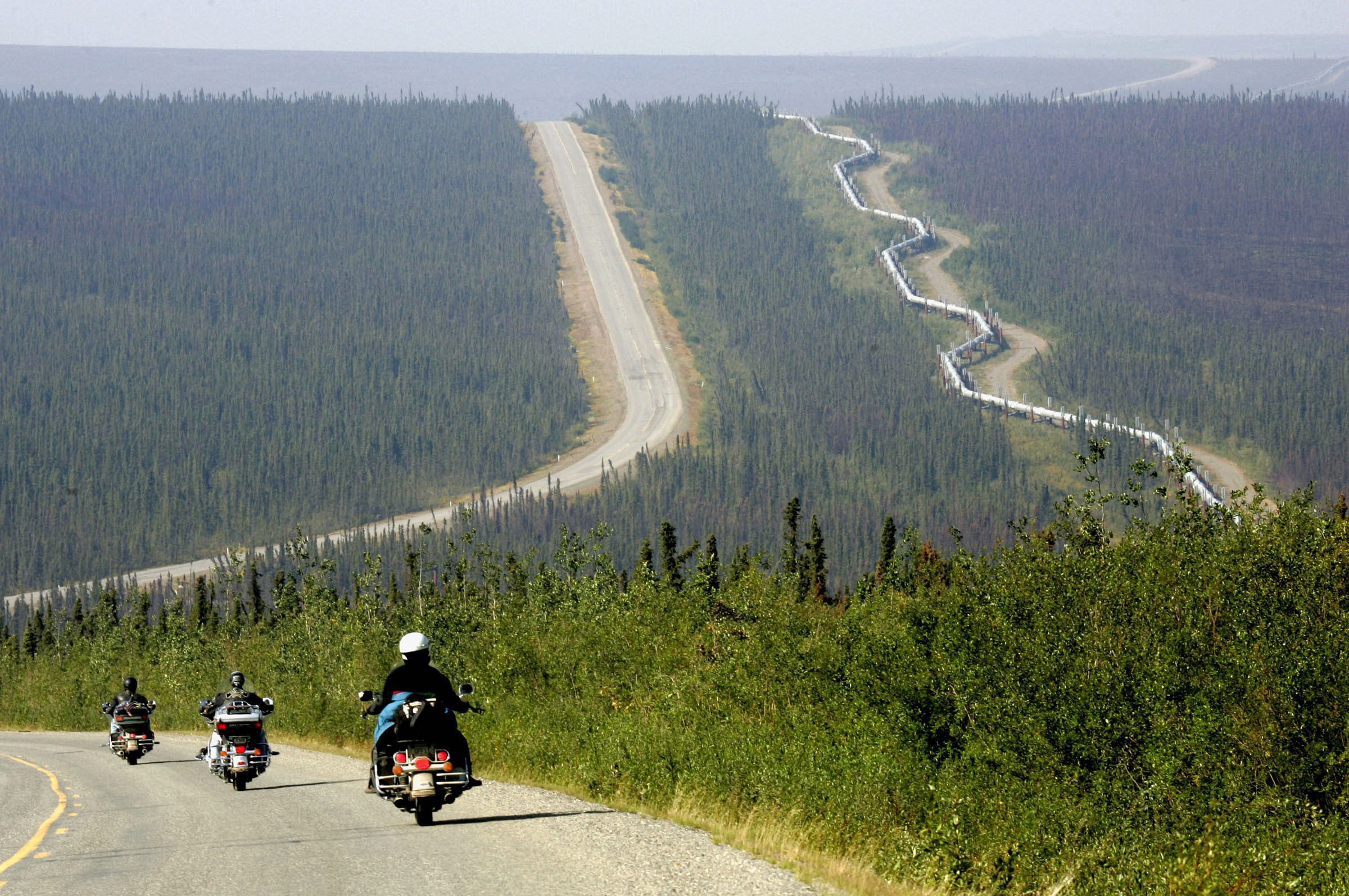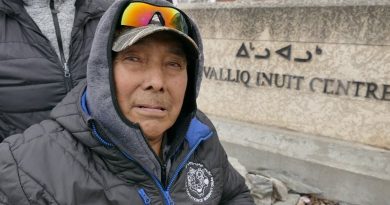Tackling ‘frost boils’ on Alaska’s Arctic Highway

A few miles from the Arctic Circle, on the United States’ only Arctic highway, there’s a sloped area notorious for perennial hazards that have caused vehicles to veer off course and sometimes crash.
With each year’s seasonal thaw, meltwater collects below the Dalton Highway’s surface to create soft spots known by a colorful — if technically inaccurate — nickname: “frost boils.” The trouble site, about 110 miles south of Prudhoe Bay and called “Beaver Slide,” was known for developing dips and buckles that enlarged throughout each summer as trucks drove on them.
Frost boils appear on roads all around Alaska and in other cold-climate regions, as well as on the natural landscape. At Beaver Slide, they have defied traditional repairs, no matter how creative road crews have been with fill material.
Now researchers at the University of Alaska Fairbanks, with support from the Alaska Department of Transportation and Public Facilities, the U.S. Department of Transportation and a private manufacturer, believe they have found a fix — a specially designed wicking fabric that can be placed below the road surface to shoo away the subsurface water, thus preventing the dangerous soft spots.
An experiment that started in 2010 and employed a nylon wicking fabric made by Georgia-based TenCate Geosynthetics has resulted in a happy outcome, said Jeff Currey, northern regional materials engineer for Alaska’s DOT.
“To my understanding, it is still working very effectively,” Currey said.
Results of the study, conducted by scientists at UAF’s Department of Civil and Environmental Engineering, are published in the current issue of the Journal of Materials in Civil Engineering.
Technical fabrics
The project involved excavation of a section of road, installation of temperature and moisture sensors, placement of the wicking fabric below the road surface and then backfill of the excavated site.
It turned that wicking fabric “is an excellent material for draining water out of the pavement structure if properly used,” the study concludes.
Alaska transportation officials have tried technical fabrics in previous road projects, with some success, but this material was different because of its capillary effects, Currey said. The fluted fibers are able to transport water even uphill, while other drainage systems rely on gravity, he said.
The Beaver Slide experiment was so successful that Alaska transportation officials used the wicking material as part of a 2012 paving project farther south on the Dalton Highway, between miles 197 and 208, Currey said.
But it is too early to know whether wicking fabric will be used more widely in Alaska, he said. For one thing, state procurement rules do not allow agencies to seek sole-source bids, and for now, TenCate is the only company producing this particular type of fabric.
Cost is a concern, he concedes. The tested fabric is four to five times as expensive as common geotechnical fabrics, he said, though initial costs might be offset by avoided road-repair costs.
And effective use requires some special conditions, he said.
The system requires a dry exit point, which rules out locations in wet climates like Juneau, he said. It requires open soil on at least one side, ruling out most urban streets, which are lined with concrete curbs and sidewalks, he said. More likely, it would be suitable for rural-like roads in cold, dry paces like Interior Alaska, he said.
“It’s probably not something where we’re going to say, ‘Let’s use it all the time,'” he said.
Contact Yereth Rosen at yereth(at)alaskadispatch.com
Related Links:
Canada: Critics blame telecommunications outage in Canada’s North on aging infrastructure, CBC News
Russia: Arctic infrastructure cannot keep pace, Deutsche Welle: Ice-Blog
United States: Alaska sprints to build up Arctic infrastructure as development looms, Alaska Dispatch



